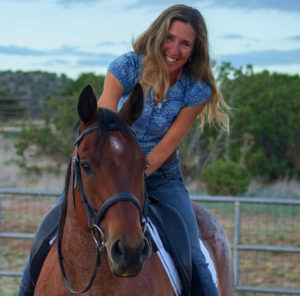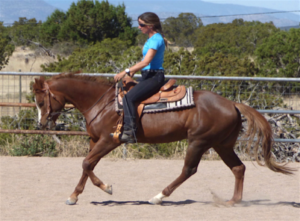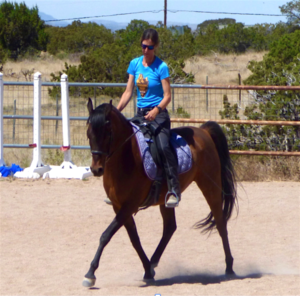 Editor’s Note: 2018 Best Horse Practices Summit presenter Katrin Silva grew up riding dressage in Germany before moving to the United States at age 19 to learn to ride Western. She’s been riding both disciplines for the last twenty years and is a regular guest columnist for Cayuse Communications. She lives in New Mexico where she works with dressage and Western clients. Visit her blog here.
Editor’s Note: 2018 Best Horse Practices Summit presenter Katrin Silva grew up riding dressage in Germany before moving to the United States at age 19 to learn to ride Western. She’s been riding both disciplines for the last twenty years and is a regular guest columnist for Cayuse Communications. She lives in New Mexico where she works with dressage and Western clients. Visit her blog here.
Read more about her exciting, informative arena presentation at the Summit with Amy Skinner here.
Silva writes:
So many horse owners do everything they can to keep their horses healthy and happy. They feed good hay. They take excellent care of their horse’s hooves and teeth. But many neglect an essential component in horse health and wellness: correct riding.
Based on the lower end of the dressage training scale, it can help horses stay sound and moving well into their senior years.
 Correct riding builds a horse’s body in a way that allows them to carry the added weight of a rider with ease. It protects muscles, joints, and ligaments from overuse injuries. No need to buy an expensive saddle and change everything you do. You just need to practice riding in this way a few times a week. If you can incorporate it into trail rides or other types of riding, even better.
Correct riding builds a horse’s body in a way that allows them to carry the added weight of a rider with ease. It protects muscles, joints, and ligaments from overuse injuries. No need to buy an expensive saddle and change everything you do. You just need to practice riding in this way a few times a week. If you can incorporate it into trail rides or other types of riding, even better.
You don’t have to spend tons of time in an arena, but it helps to have a flat training area with decent footing, large enough for a 60-70 foot circle. The saddle you are already using will do fine, as long as it allows you to feel what your horse is doing underneath you. It’s best to do this type of work in a snaffle bit. Why? Because a well-fitting snaffle bit encourages some contact and allows for direct, subtle communication between the rider’s hands and the horse’s mouth.
So, what exactly should you do with your horse?
- Focus on body alignment
Ride lots in circles with the horse’s body in correct alignment. The horse’s spine should follow the line of your circle from ears to tail. Picture a banana going around a circle.
 The smaller the circle, the more the horse needs to bend, so start with larger circles. About 50 to 60 feet is a good size to start with. You can’t create bend with your reins. You can only create flexion at the horse’s poll. The other 90 percent of the horse’s body should respond to your seat and legs. Imagine a set of railroad tracks going around a circle, and try to keep the entire horse between them.
The smaller the circle, the more the horse needs to bend, so start with larger circles. About 50 to 60 feet is a good size to start with. You can’t create bend with your reins. You can only create flexion at the horse’s poll. The other 90 percent of the horse’s body should respond to your seat and legs. Imagine a set of railroad tracks going around a circle, and try to keep the entire horse between them.
When the horse tries to fall against the inside track, your inside leg reminds him to stay upright. When the horse’s hindquarters try to drift out onto a larger circle to avoid bend, your outside rein and leg keep them on track.
Be patient. Be happy with every bit of progress. Reward your horse often.
Every horse has a stiff side and hollow side. It’s our responsibility to minimize the difference between them. The stiff side is the one your horse doesn’t want to bend into.
Ride lots of leg-yields to help him get the idea. The easiest way to introduce a leg yield is the spiral: on a circle, use your inside rein toward the inside or lift your inside hand a bit. Don’t pull back.
Once your horse flexes at the poll, release the inside rein and push the horse’s ribcage onto a larger circle with your inside leg. After a few steps forward and sideways, straighten the horse and ride forward. Repeat a few times, or until there is some improvement, then change directions. Introduce this work at the trot. But make it your goal to have an aligned horse at all three gaits.